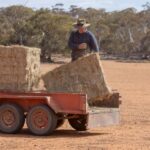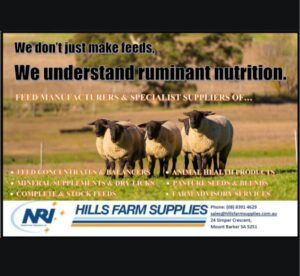Quick facts for consideration when lamb feedlotting:

- If producers are mixing their own rations it is important to have all feedstuffs analysed for. This is because considerable variation does occur, particularly with roughages such as hay, straw and silage.
- Cereal grains are a concentrated source of energy and generally the cheapest. Cereals and pulses can also make up the bulk of protein requirements. Rations commonly contain a high percentage of cereal grain (barley) plus pulses such as peas or lupins, together making up at least 80% of the mixture. Roughage such as hay is also an important component of the ration and is general included at about 15-20% weight.
- Pellets or commercially formulated rations are convenient and easy to use however many farmers have the capacity to producer their own rations at considerable saving. The choice will be determined by the size of the operation, skills and available on-farm resources.
- Sheep on pastures will generally consume around 3.0% of their bodyweight as dry matter. When on high grain diets feed intake will increase to 4.0-5.0% of their bodyweight.
- Vaccinate lambs prior to entry. Ideally the final vaccination needs to be done at least 10 days before entry into the feedlot.
- Lambs with worms will have reduced feed intakes, reduced growth rate and are more likely to scour increasing flystrike risk. If a drench is required use on with at least 95% effectiveness.
- Where there are enough lambs it is worth drafting on body weight ranges to no more than 5kg. Mob size should not exceed 500 head and ideally be 250-300 for positive social interactions and reduced stress.
- Shearing lambs in summer will provide a temporary increase in intake and production. If shearing lambs, allow at least two weeks for shearing cuts to heal before entry into the feedlot.
- Allow for about 25cm/head for troughs, self-feeders allow 3-5cm/head. Water allow 1.5cm/head minimum. Lambs require an area of 2 to 5 square metres each.
- Water needs to be cool, clean and fresh. Reduced water intake will limit the feed intake and growth. The maximum recommended level of salt in the water for lambs is 3000 parts per million (or 900mS/m).
- Work out a program to minimise stress, keep to routines, make any feed or management changes as gradual as possible.
Compiled by Anthony Pearce, Managing Partner & Ruminant Production Specialist for Hills Farm Supplies.

